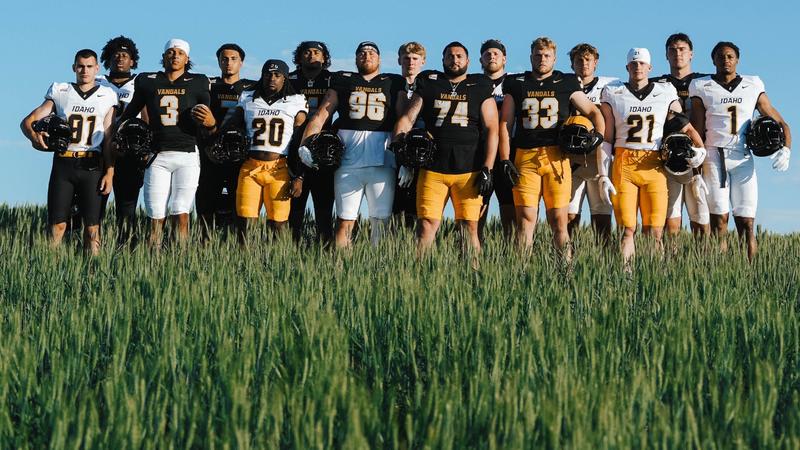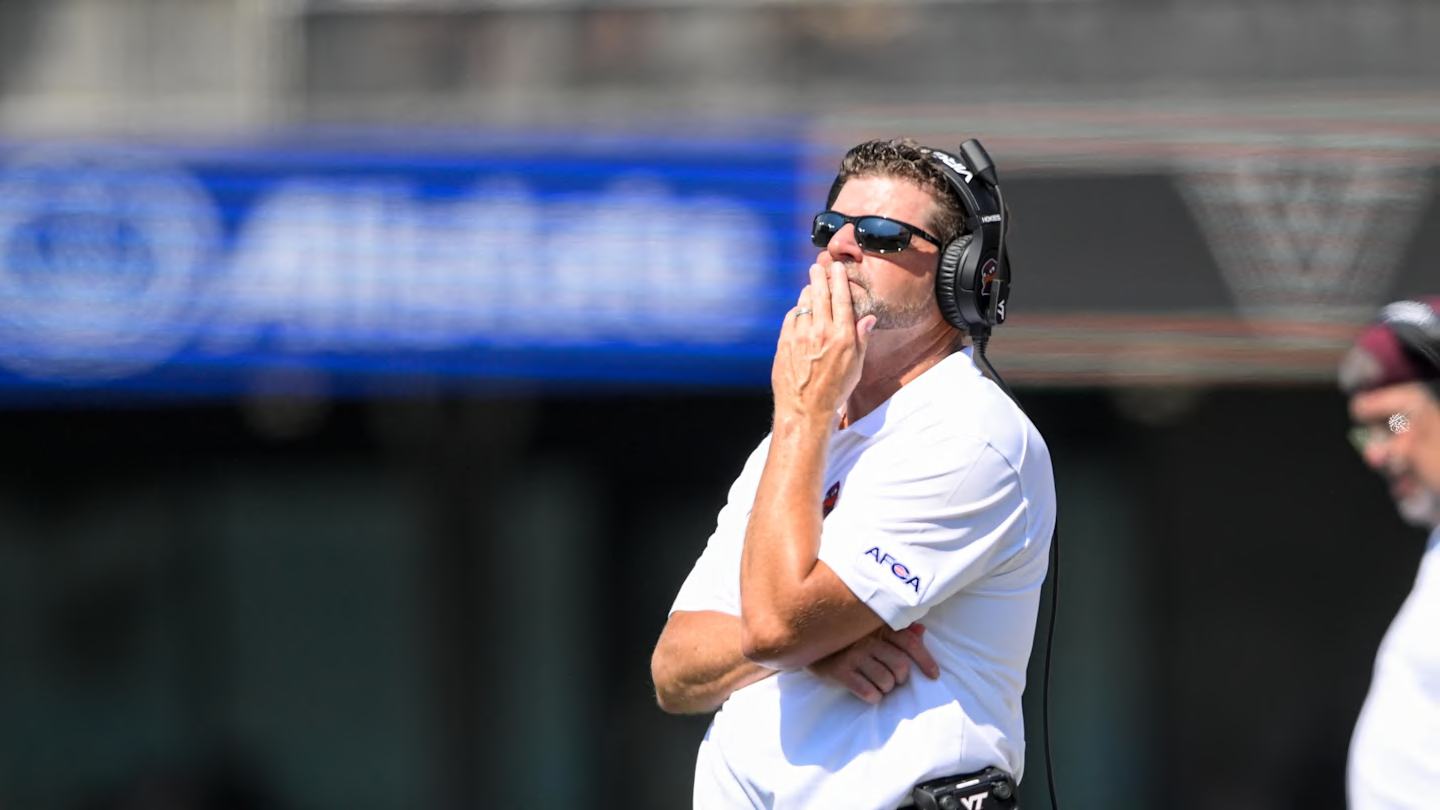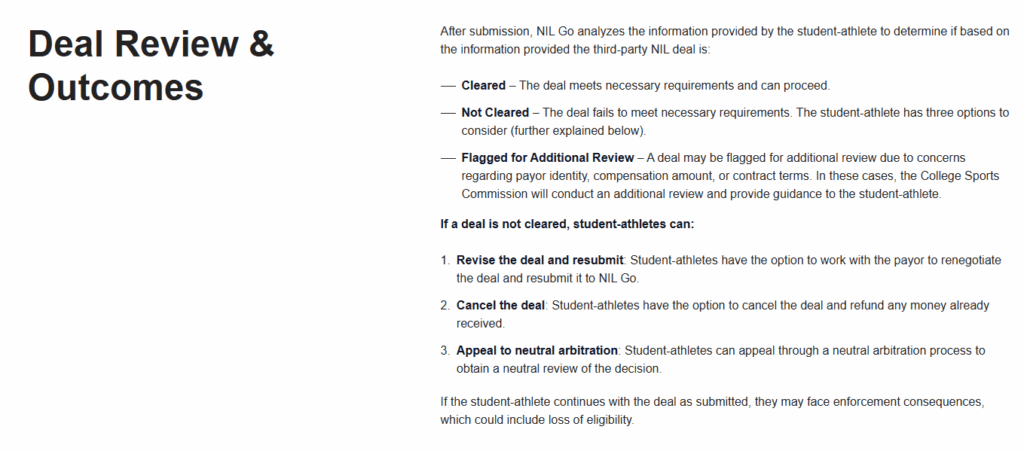NIL
Quinn Ewers shares best advice for next generation of college recruits
Just be present. That’s what Quinn Ewers has to say. Miami Dolphins rookie quarterback Quinn Ewers offered advice to aspiring college football players during this week’s NFLPA Rookie Premiere, emphasizing the importance of consistency and presence amid the pressures of recruiting and the ever-evolving landscape of NIL deals. Ewers, a former Texas Longhorns standout and […]

Just be present. That’s what Quinn Ewers has to say.
Miami Dolphins rookie quarterback Quinn Ewers offered advice to aspiring college football players during this week’s NFLPA Rookie Premiere, emphasizing the importance of consistency and presence amid the pressures of recruiting and the ever-evolving landscape of NIL deals.
Ewers, a former Texas Longhorns standout and the No. 1 overall recruit in the Class of 2021, spoke with On3 about his journey and the lessons he hopes to impart to the next generation of athletes.
“Just be present, especially if you’re in high school and you’re not receiving as many offers or whatever it is-coaches aren’t recognizing you as much,” Ewers said. “Just remain present and continue to be consistent. As long as you stay consistent, you’re going to end up where you want to be, at the end of the day. That’s just how it goes.”
Ewers, who began his collegiate career at Ohio State before transferring to Texas, acknowledged his own privileged position as a highly recruited player. “I was lucky enough to be a highly recruited guy, but I just tried to stay as consistent as I could as long as I could, which, at the end of the day, helped me a ton,” he said. “That’s all it is about-remaining present and taking care of business and letting all the other stuff fall in line, because it will if you really put the work in.”
His message comes at a time when young athletes face unprecedented opportunities and distractions, from social media attention to lucrative NIL deals. Ewers’ advice to “take care of business” and trust the process is a reminder of the fundamentals that underpin long-term success.
After leading Texas to back-to-back College Football Playoff appearances, Ewers chose to enter the 2025 NFL Draft, forgoing his final season of eligibility and a reported $8 million in potential NIL earnings. Despite sliding to the seventh round, he signed with the Dolphins and is expected to make his professional debut in the preseason. The four-year deal Ewers accepted will reportedly be worth $4.3 million. For Ewers, the next step is clear: stay present, work hard, and let the results speak for themselves.
NIL
Idaho Football Kick Times Announced for 2025 Season
Story Links FARMINGTON, Utah – With the college football season kicking off in just over 50 days, the Big Sky Conference and its television partners have announced kickoff times for the 2025 season. With the unveiling of kick times, the Idaho Vandals learned their times for eight of their games. The Vandals open […]

FARMINGTON, Utah – With the college football season kicking off in just over 50 days, the Big Sky Conference and its television partners have announced kickoff times for the 2025 season. With the unveiling of kick times, the Idaho Vandals learned their times for eight of their games.
The Vandals open their 2025 season in the national spotlight as they head across the Palouse to play Washington State on The CW on Saturday, August 30. Idaho is featured on national television in a conference-leading three times, with its game against Montana on ESPN Networks – the official time and network to be announced later – and in a contest against Northern Arizona on ESPN 2.
Idaho’s full 2025 schedule is included below and can be seen here. The schedule graphic, in which the Vandals recreated the iconic photo with the airplane, can be seen here.
2025 Idaho Football Schedule:
(All games are on Saturdays unless specified otherwise)
- Aug. 30: at Washington State, 7 p.m., The CW
- Sept. 6: vs. St. Thomas, 1 p.m., SWX and ESPN+
- Sept. 13: vs. Utah Tech, 1 p.m., SWX and ESPN+
- Sept. 20: at San Jose State, 2 p.m., Mountain West Network
- Sept. 27: at Montana, TBA, ESPN Networks
- Oct. 11: vs. Northern Colorado, 2 p.m., SWX and ESPN+
- Oct. 18: at Eastern Washington, 4 p.m., SWX and ESPN+
- Oct. 25: vs. Portland State, 1 p.m., SWX and ESPN+
- Oct. 31: at Northern Arizona, 7:30 p.m., ESPN 2
- Nov. 8: vs. UC Davis, 4 p.m., SWX and ESPN+
- Nov. 15: at Sacramento State, 6 p.m., ESPN+
- Nov. 22: vs. Idaho State, 1 p.m., SWX and ESPN+
SCHEDULE NOTES
This is the third consecutive season in which Idaho will host at least six games in the P1FCU Kibbie Dome. In 2023, the Vandals hosted two playoff games in the Dome, and in 2024, Idaho was the host site for its second-round playoff game against Lehigh. This season, the Vandals host six regular-season games in Moscow.
Last season, Idaho went a flawless 6-0 in Moscow.
SPECIAL THANKS
Idaho Athletics thanks Rob and Carly Schoepflin and their family for the use of their runway, plane, and property to re-invent its legendary photoshoot. The Vandals also thank Seth Denton, who was the pilot during the most recent version of the picture. It wouldn’t have been possible to do without their effort, cooperation, and hard work.
SOCIAL MEDIA: Stay up to date with everything happening with the Vandals by following them on Facebook, Instagram, and X.
TICKETS: Season tickets and mini plans can be purchased here or by calling the Idaho ticket office at (208)885-6466.
NIL
AJ Dybantsa’s Fanatics deal helps boost $4.1 million NIL valuation
This season, the BYU basketball program will likely have more eyes on it than usual thanks to the presence of star freshman AJ Dybantsa. Dybantsa is widely expected to be one of the, if not the first name off of the board in next June’s NBA Draft, but not before a college season at BYU […]

This season, the BYU basketball program will likely have more eyes on it than usual thanks to the presence of star freshman AJ Dybantsa. Dybantsa is widely expected to be one of the, if not the first name off of the board in next June’s NBA Draft, but not before a college season at BYU that will be filled with anticipation.
Although he is set to cash in big-time once he gets to the NBA, Dybantsa is already able to make some serious bread at the college level thanks to the sport’s new NIL (name, image, and likeness) rules, and recently, some new information was unearthed on some commitments that Dybantsa has already made in that department.
“Dybantsa has signed a multi-year partnership with Fanatics and Fanatics Collectibles,” reported Nick Schultz of On3 Sports.
“We’re excited to announce that we’ve signed BYU star AJ Dybantsa to an exclusive trading card & memorabilia deal,” said the company in a statement on their account on X, formerly Twitter.
Schultz also reported that the partnership will be “focused on trading cards and memorabilia, (and) will also continue beyond his college career once he eventually heads to the NBA.”
Dybantsa’s current NIL valuation is at $4.1 million.
Dybantsa essentially checks every box of what teams are looking for in the modern NBA. At 6’9″, he has an NBA-ready frame to be an elite wing at the next level, and has all of the tools to be an elite defender the second he gets to the league.
He also has immense athleticism, a solid handle, and a silky-smooth jumper that have garnered comparisons to players like Paul George and other NBA stars.
Before all of that, though, Dybantsa will have a chance to push his draft stock even higher (if that’s possible) during this year with BYU, where the team will have the national spotlight thanks to his arrival.
Jackson Stone is a sports journalist for ClutchPoints with expertise in covering the NBA, NFL, and CAA Football. The Mercer University senior from Atlanta is on track to graduate with a BA in communications, and he has bylines at FanSided and USA Today Sports’ Georgia athletics website.
NIL
Roger Federer Becomes Billionaire Through Strategic Investments
Roger Federer, the legendary tennis player, has joined the ranks of the world’s billionaires, with an estimated net worth of $1.3 billion. This impressive figure is not solely attributable to his remarkable achievements on the court, where he has won 20 Grand Slam titles and earned $130.6 million in prize money over his 24-year career. […]


Roger Federer, the legendary tennis player, has joined the ranks of the world’s billionaires, with an estimated net worth of $1.3 billion. This impressive figure is not solely attributable to his remarkable achievements on the court, where he has won 20 Grand Slam titles and earned $130.6 million in prize money over his 24-year career. Instead, Federer’s wealth has been significantly bolstered by his strategic investments and lucrative brand partnerships.
Federer’s off-court deals have been a major contributor to his financial success. His long-term partnerships with luxury brands such as Rolex and Mercedes-Benz have generated millions of dollars. For instance, his annual income from Rolex is reported to be $8 million, and from Mercedes-Benz, $5 million. Additionally, his total earnings from Lindt amount to $20 million. These partnerships have not only enhanced his brand but also provided a steady stream of income.
One of Federer’s most lucrative decisions was parting ways with Nike in 2018 and securing a $300 million partnership with Uniqlo, paid out over 10 years. This move has proven to be highly beneficial, further solidifying his financial standing. However, it is his investment in the Swiss shoe company On that has yielded the most significant returns. In 2019, Federer bought a 3% stake in On after his wife and friends expressed their enthusiasm for the brand. The company’s subsequent rise in popularity, particularly in the U.S., has led to an estimated valuation of $17 billion, making Federer’s stake worth at least $500 million. This investment has outperformed his earnings from winning 20 Grand Slams, underscoring the importance of diversifying income streams and making strategic investments.
Federer’s financial success is a testament to his business acumen and ability to identify lucrative opportunities. His journey to becoming a billionaire serves as an inspiration for athletes and investors alike, demonstrating the potential for financial growth through smart investments. Beyond his financial achievements, Federer has also used his platform to encourage others to seek fulfillment beyond their professional pursuits. In a commencement address at Dartmouth College, he advised graduates to look beyond their bubbles and make a difference in the world, emphasizing that life is much bigger than any single endeavor.
Federer’s story is part of a broader trend where athletes are leveraging their popularity to secure lucrative brand deals and investments. This trend is likely to continue, with more athletes joining the ranks of the ultra-rich. The changes in name, image, and likeness (NIL) rules for student-athletes have made it easier for young athletes to secure multi-million-dollar deals, further fueling this trend. However, there are concerns that the focus on making money may overshadow the enjoyment of the game. Multimillionaire Shaquille O’Neal has expressed his belief that athletes should prioritize their commitment to their teams and schools, rather than constantly seeking the best financial deals.

NIL
New transfer portal strikes Virginia Tech football as freshman WR leaves program
One thing that has been consistent in recent years with Virginia Tech football and recruiting has been the pipeline between Blacksburg and Green Run High School. The connection that Brent Pry built has helped land a number of the prospects out of the Virginia Beach area. In February of 2024, the Hokies picked up a […]



One thing that has been consistent in recent years with Virginia Tech football and recruiting has been the pipeline between Blacksburg and Green Run High School. The connection that Brent Pry built has helped land a number of the prospects out of the Virginia Beach area.
In February of 2024, the Hokies picked up a pair of commitments on the same day from Green Run products Jayden Anderson and Knahlij Harrell. The stay at Virginia Tech was a short one after Anderson is reportedly hitting the transfer portal, according to Pete Nakos on On3 Sports.
NEW: Virginia Tech WR Jayden Anderson has entered the NCAA transfer portal, @PeteNakos_ reports.https://t.co/hr69cwwOMf pic.twitter.com/ua7HzmM8dv
— Transfer Portal (@TransferPortal_) July 9, 2025
Virginia Tech freshman WR Jaydne Anderson enters transfer portal
You might be thinking, “The transfer portal in July?” Yes, the transfer portal in July. The NCAA Committee on Legislative Relief announced that it will issue a one-time waiver to allow Division I athletes whose programs are placed on the “Designated Student-Athlete” list to enter the transfer portal between July 7 through Aug. 5. Schools had until July 6 to assign the DSAs allowed to enter the portal. Anderson is taking advantage of it.
Virginia Tech has a slew of receivers that will be looking to crack the lineup for the 2025 season, and Anderson, a true freshman, was not going to see the field with the potential depth ahead of him. First-year offensive coordinator Philip Montgomery has four-star freshmen wide receivers Shamarius Peterkin and Micah Matthews, along with Cameron Spraks and freshman athlete Luke Stuewe, also at the position.
The 5-foot-11, 162-pound Anderson will have four years of eligibility remaining at whichever school he ends up at. He enrolled this summer and, according to Evan Watkins of 247Sports, Anderson left the program and had been back home, so this official announcement was no surprise, but being just a true freshman, it’s a tough loss before he even got a fall practice under his belt.
NIL
BYU star AJ Dybantsa adds historic Fanatics deal to $4.1 million NIL valuation
BYU incoming freshman AJ Dybantsa hasn’t stepped foot on a college basketball court yet, but is already one of the most prolific NIL earners in the country. From Nike to Red Bull, the projected top 2026 NBA Draft pick is building a major brand portfolio and has now added an exclusive trading card and memorabilia […]

BYU incoming freshman AJ Dybantsa hasn’t stepped foot on a college basketball court yet, but is already one of the most prolific NIL earners in the country. From Nike to Red Bull, the projected top 2026 NBA Draft pick is building a major brand portfolio and has now added an exclusive trading card and memorabilia partner to the mix.
Fanatics and Fanatics Collectibles have announced they have signed an exclusive deal with Dybantsa – one of their most significant NIL partnerships to date – a multi-year contract that starts immediately and goes beyond his collegiate career.
The partnership is focused on trading cards and memorabilia, including autographs, game-used jerseys, inscriptions and Dybantsa’s inclusion in Fanatics brand marketing campaigns. He was already featured in Fanatics Collectibles’ McDonald’s All-American Game deal and previous products during his illustrious high school career.
Fanatics and Topps revealed their latest partner via a hype video shot on mountains of the Wasatch Range in Provo, Utah, Dybantsa’s future home at BYU.
“I remember seeing LeBron James, Michael Jordan and those type of guys on trading cards,” Dybantsa said in the announcement video. “When I see my face on a card, it’s going to be a surreal feeling. I know where I belong.”
According to Fanatics, Dybantsa will next be featured in a variety of upcoming products, such as Bowman U NOW – a program that celebrates key moments in collegiate sports – and other Bowman offerings.
Dybantsa joins recent NIL stars JuJu Watkins of USC, Cooper Flagg formerly of Duke and now the Dallas Mavericks and Caitlin Clark formerly of Iowa and now the Indiana Fever. He currently boasts a $4.1 million NIL valuation via On3.
NIL
An attempt to alleviate the confusion related to House, NIL, pay-for-play, Deloitte, etc.
Are you one of the millions confused about most aspects of the college sports compensation conversation in the wake of the House v. NCAA court settlement? [Sign up for Inside Texas for $1 and get PLUS access up to the Ohio State game!] I’ve found that writing about a topic is a good way to […]

Are you one of the millions confused about most aspects of the college sports compensation conversation in the wake of the House v. NCAA court settlement?
[Sign up for Inside Texas for $1 and get PLUS access up to the Ohio State game!]
I’ve found that writing about a topic is a good way to learn more about it and so I hope this lengthy write-up helps you get a little bit clearer picture on what’s going happening in college sports at the current moment. But even with this data, there remains widespread uncertainty.
This is not a “why Texas is struggling on the recruiting trail” article. But there are some aspects of the current news story that point toward factors that have become relevant in recruitments Texas is involved in and recruitments without any burnt orange influence.
As you’re reading this article, make sure to have this piece from On3’s Pete Nakos opened up along with this from Yahoo’s Ross Dellenger to look through after you’re done. There are a lot of different angles and aspects of this story, and this piece will reference those articles, but one thing is certain: confusion is rampant.
When they say the schools can pay players now…
The House vs. NCAA settlement, which the NCAA and the Power Five conferences agreed to instead of engaging in litigation that would have made the final $2.8 billion in back damages look like chump-change, allows for schools to share revenue up to a cap of $20.5 million per year with athletes. House refers to former Arizona State swimmer Grant House, not the U.S. House of Representatives.
The schools settled for this and agreed to this provision instead of facing the possibility of paying almost $20 billion in back damages. Billion with a B.
That $20.5 million cap looks different school to school in Division I. In the Southeastern Conference, the league is requiring its institutions to dedicate $2 million of its cap to “Alston payments.” What those are don’t matter all that much, just know it’s from another court case where the NCAA essentially was told “you aren’t doing things right.”
So that leaves $18.5 million to share. Most schools are dedicating around 75% of that cap to football.
This is where any concerns about the actual schools themselves and not the ecosystems surrounding them going over the cap ring hollow. Schools don’t want to add a $20.5 million line item to their budget. Texas Athletics brought in $331 million in the 2024 fiscal year. So by percentage points, the Longhorns can share up to 16% of their revenue. Not doing so would put UT athletics at a competitive disadvantage.
That’s a HUGE number. And don’t forget: football is the only revenue producer for many athletic departments.
The percentage points look considerably higher for other schools. There are a number of FBS schools that don’t even bring in $100 million, let alone $200 million. In an era where athletic departments not only have to fully fund scholarships but also pay their players, spending more money than what’s allowed isn’t on their minds.
When you hear the term “publicity rights” or “revenue sharing” or “schools paying players,” proper references are talking about paying players against the $20.5 million cap direct from the institution. This does fit under the overall umbrella of Name, Image, and Likeness, or NIL, but the more specific terms help describe what part of NIL schools provide.
More math to find more money
Last year, it was reported that Ohio State’s “collectives have combined to raise an estimated $20 million to support this year’s football roster.”
So here are a few equations.
20,500,000 (the revenue sharing cap) – 2,000,000 (Alston payments) = 18,500,000
18,500,000 x 0.75 (75% for football) = 13,875,000
That’s a lot less than $20 million. So for championship caliber rosters, ones like Texas’ that are expensive but don’t cost near as much as one report’s projected $35-40 million, where do they find the additional money needed?
This is where what’s now being called noninstitutional NIL payments come into play. Previously, collectives such as the Texas One Fund could pool money from Texas Longhorns fans and reimburse players for their appearances in support of charitable organizations. They have to operate under different rules now in the wake of the House settlement, but the end goal of the Texas One Fund remains the same: putting money in Longhorns’ pockets.
Of course, businesses are able to provide NIL reimbursement to players. This “corporate NIL” is pretty uncontroversial. Think Bijan Mustardson. Think Arch Manning and Red Bull.
Collectives are still around, but they have to operate under the settlement’s regulations and their ability to pay players is more scrutinized than ever considering every noninstitutional NIL deal of $600 or more has to go through a clearinghouse. And that part of the process, along with other aspects of the House settlement, has put college football in its current confusing position.
No one knows what’s really going on
Dellenger is at Big 12 Media Days and gave the conference’s head coaches a chance to sound off about the current landscape, one where prospects like Felix Ojo have agents announcing the details of guaranteed revenue sharing contracts agreed to in exchange for a commitment and an eventual signing day signature.
But are those even allowed? Based off the settlement, you’d think no.
The NCAA released a 36-page Q&A for member schools in June on House and revenue sharing specifically. It included this tidbit.

That sounds all well and good, but we already know about Ojo and his deal with Texas Tech. Everybody knows this is being ignored. It’s obviously not August 1, and yet we know Ojo’s contract details?
There are a few things that make this NCAA guidance as currently feckless as other NCAA guidance, at least as far as bold and well-funded super-boosters or booster corps are concerned.
The first is that obviously, as mentioned, entities like schools and noninstitutional collectives and businesses aren’t waiting on the calendar in the House era.
The second is that there are states passing laws that essentially say schools can do what’s necessary to abide by House regulations and that anything in the legislation signed by their governor supersedes anything passed down by the NCAA. Tennessee did this in May. Michigan has a similar bill on its house floor.
Texas recently passed a bill that doesn’t appear to go as far as Tennessee’s, but it does allow for 17-year old high schoolers in the Lone Star State to receive NIL payments. This pertains to both revenue sharing and NIL and noninstitutional NIL. These laws also fly in the face of NCAA calendar regulations considering many are like Texas’ and permit high schoolers to seek and obtain NIL. In fact, language in these laws say the NCAA and Deloitte have no real say in the matter.
The third… wait… did that say Deloitte? Yes, they’re involved and their involvement adds additional confusion.
As part of the settlement, the NCAA and its member institutions started the College Sports Commission. The CSC created “NIL Go,” which is run by Deloitte and functions as a clearinghouse for third-party NIL deals such as those with collectives or car dealerships or law firms or natural gas companies. They evaluate deals based on payor association, valid business purpose, and range of compensation.
From their website…

Ignore 2026 recruiting for a second. Football teams have rosters full of players that they have to deal with. Then they have men’s basketball players. They have women’s basketball players. They have baseball players. They have softball players. They have entire athletic departments, and many of them likely have some sort of deal in place.
From Dellenger’s article, Arizona State head coach Kenny Dillingham said it best.
“We don’t know the rules,” the Arizona State head coach says. “The settlement passed, but who knows what Deloitte is going to clear. Until there is clarity, you’re living in limbo.”
And there’s something else.
“You are seeing a lot of people lie and promise fake things,” he says.
A parting shot from Nakos’ article that explains where we are…
Recruiting staffers have said some top prospects are making anywhere from $20,000 to $25,000 monthly.
“It doesn’t matter who did it first,” a Power Four general manager recently said. “It doesn’t matter who did it after. It’s the world we live in right now.”
Aug. 1 marks the official offer date for when institutions can begin offering revenue-sharing contracts to recruits. But that has not stopped schools from making verbal offers or informally sending contract numbers. Recruits are not able to sign rev-share deals until National Signing Day.
NIL collectives and schools have changed tactics, too. Some schools are having NIL collectives work as marketing firms, striking deals with recruits that expire before they set foot on a college campus. Signing high school recruits to pure name, image and likeness deals is legal, depending on state rules.
But at the college level, the wait continues for the NIL clearinghouse to rule on highly valued booster-driven contracts.
Confused about which law is the one institutions and collectives have to follow?
And which regulations institutions are ignoring?
And which states permit one thing and which states prohibit another thing?
And which deals work and which deals don’t?
Everyone is. What’s that old Genesis song, Land of Confusion? That’s where college sports and college football are at, and that land of confusion has brought about a waiting game for real answers as to what enforcement is actually going to look like.
And in the meantime while waiting for that enforcement, if it even shows up at all, monetary offers have flowed to recruits and current players without consequence. And if the enforcement pops up? Well, back to the courts we likely go.
[Want to be the most informed Texas Longhorns football fan? Order the 2025 edition of Thinking Texas Football today!]
There are so many layers to this story, but hopefully this explains where the sport is on July 9. Until there’s teeth enforcement, there’s no enforcement.
Who knows what July 10 will bring.
-

 Technology2 weeks ago
Technology2 weeks agoPet fitness and wellness trends for a healthier and happier dog
-

 College Sports2 weeks ago
College Sports2 weeks agoWAC to Rebrand to UAC, Add Five New Members in 2026
-

 Motorsports1 week ago
Motorsports1 week agoWhy Cosmetics are Making Up for Lost Time in Women’s Sports
-
College Sports3 weeks ago
Women's Basketball Thanks Shannon LeBeauf for 14 Seasons
-

 Professional Sports3 weeks ago
Professional Sports3 weeks agoAlex Pereira responds to rumors of UFC heavyweight title fight with threatening message
-

 College Sports3 weeks ago
College Sports3 weeks agoAlabama Basketball
-

 Professional Sports2 weeks ago
Professional Sports2 weeks agoFrancis Ngannou sends Dana White a message following Jon Jones' shock UFC retirement
-

 College Sports2 weeks ago
College Sports2 weeks agoA new era of Dickinson hockey begins behind the bench – The Dickinson Press
-

 Motorsports2 weeks ago
Motorsports2 weeks agoNASCAR This Week – Patriot Publishing LLC
-

 Sports2 weeks ago
Sports2 weeks agoSEC Conference imposing a fine will create the opposite effect.
































